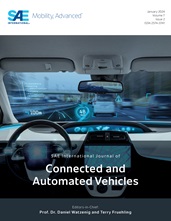This article introduces a comprehensive cooperative navigation algorithm to
improve vehicular system safety and efficiency. The algorithm employs surrogate
optimization to prevent collisions with cooperative cruise control and
lane-keeping functionalities. These strategies address real-world traffic
challenges. The dynamic model supports precise prediction and optimization
within the MPC framework, enabling effective real-time decision-making for
collision avoidance. The critical component of the algorithm incorporates
multiple parameters such as relative vehicle positions, velocities, and safety
margins to ensure optimal and safe navigation. In the cybersecurity evaluation,
the four scenarios explore the system’s response to different types of
cyberattacks, including data manipulation, signal interference, and spoofing.
These scenarios test the algorithm’s ability to detect and mitigate the effects
of malicious disruptions. Evaluate how well the system can maintain stability
and avoid collisions under compromised conditions. It also analyzes the impact
of varying levels of attack severity on overall system performance. The
cooperative navigation framework highlights its potential as a robust solution
for secure, efficient, and safe autonomous vehicle operations in increasingly
interconnected and potentially hostile environments. Case 1 simulates
communication jamming, where all channels except vehicle-to-vehicle
communication are compromised. Case 2 extends this to jamming in the smart
traffic light system, creating a non-signalized environment. Case 3 represents
an ideal scenario with seamless communication. Case 4 explores vulnerability to
deliberate interference in actor vehicle velocities, amplifying collision risk.
Surrogate optimization with radial functions ensures proactive collision
avoidance, while model predictive control with the interior point solver
optimizes trajectory planning, promoting collision-free operation, and improving
traffic flow. The algorithm’s outputs are seamlessly integrated into the vehicle
control system, with the ego vehicle’s dynamics modeled realistically. Through
extensive simulations, the algorithm proves effective across diverse scenarios,
including communication disruptions and intentional interference. The research
contributes to cooperative navigation system advancement, showcasing potential
improvements in safety, efficiency, and adaptability in contemporary vehicular
environments. The algorithm’s ability to handle various scenarios presents
promising prospects for future intelligent transportation systems research.
